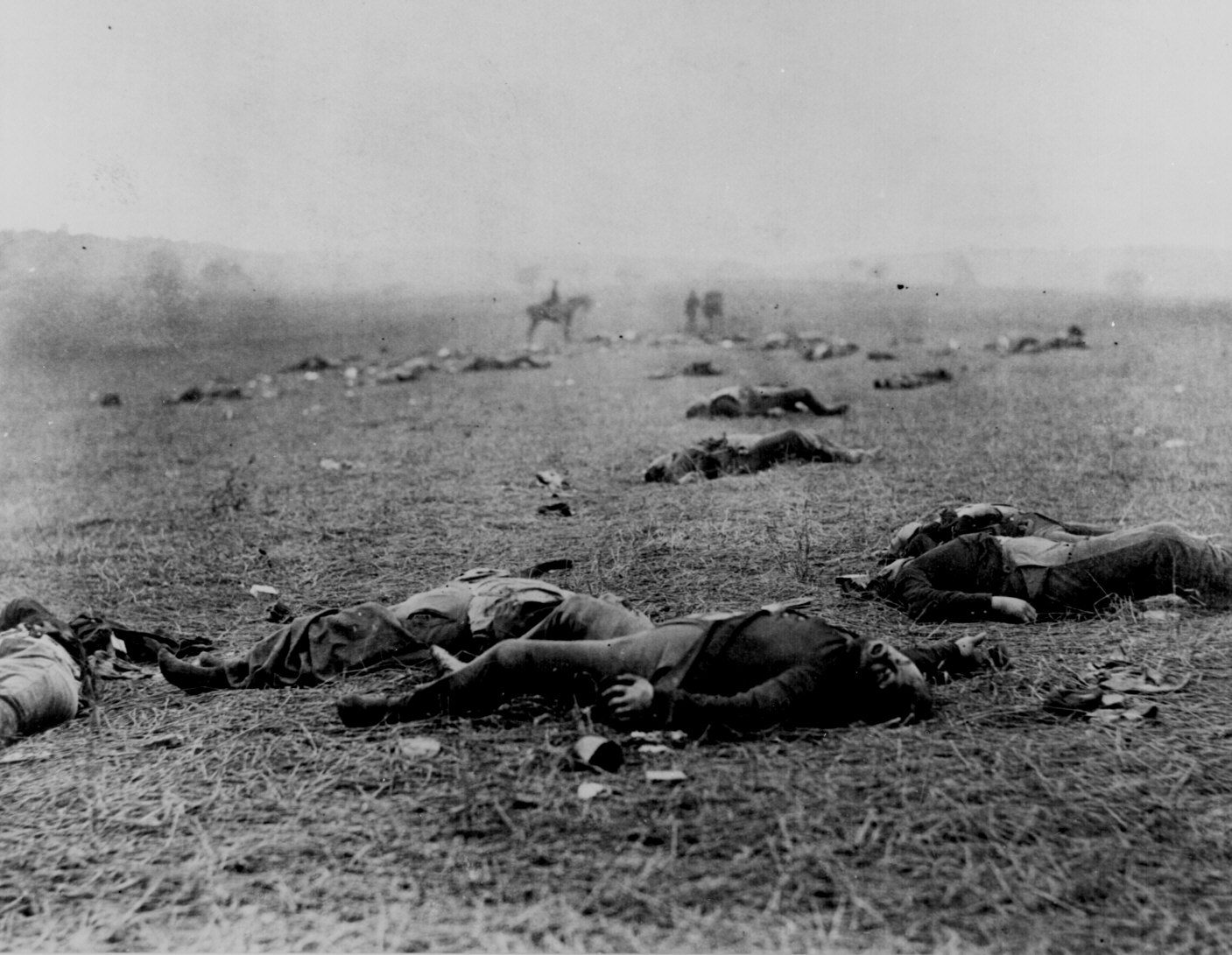Joel Meyerowitz
One of the Images from Aftermath (2001)
Taken on a large format camera in order to create crystal clear images of huge proportions, you are able to see every detail, every bit of grit and dust which is very interesting to look at. In 2011 Meyerowitz was commissioned to revisit the site and document the changes that had happened over 10 years, the thing that called out to him the most was a single tree that had survived the destruction was put back where it originally was after being put in an orchard for 10 years.
Matthew Brady
 American Civil War
American Civil War Brady exposed a lot of death within his work, perhaps because this was the easiest subject to photograph during this time. Exposures could be up to half an hour long (maybe even longer) so to get the best (and most poignant images) the subjects had to be dead otherwise the pictures would be illegible.
Don McCullin
"Shell Shocked Soldier" (1968)
This image shows the effect war has on a living soldier, this man has shell shock a horrendous mental condition many soldiers faced (and still do). McCullin said that the soldier seemed to look straight through him and stayed perfectly still during the capture of this image, it was like McCullin wasn't even there. Knowing this makes the photograph a lot more poignant and raises questions as to why we should ever get involved in war.
Pavel Maria Smejkal produced an interesting body of work called Fatescapes (2009), he looked at famous images throughout history (mainly focusing on war) and edited out the people in them, completely changing the tone of the photographs.
Damon Winter An "embedded" photographer in Afghanistan who used his iPhone to document the war.
Paul Seawright is more of a "straight" photographer, which means his work is perhaps more scientific and emotionless, we watched a short video about his work "Camp Boundary" from his book "hidden". Which addressed the hidden enemy via technology or what's underground ie landmines.
From the video:
Seawright was criticised for not being direct, the narrative is too difficult. But in his opinion being too explicit is journalistic, and having a photograph too ambiguous makes it have no meaning. You have to be able to access the meaning over a little bit of time, that's what makes a good photograph. The construction of meaning is done by the viewer.
No comments:
Post a Comment